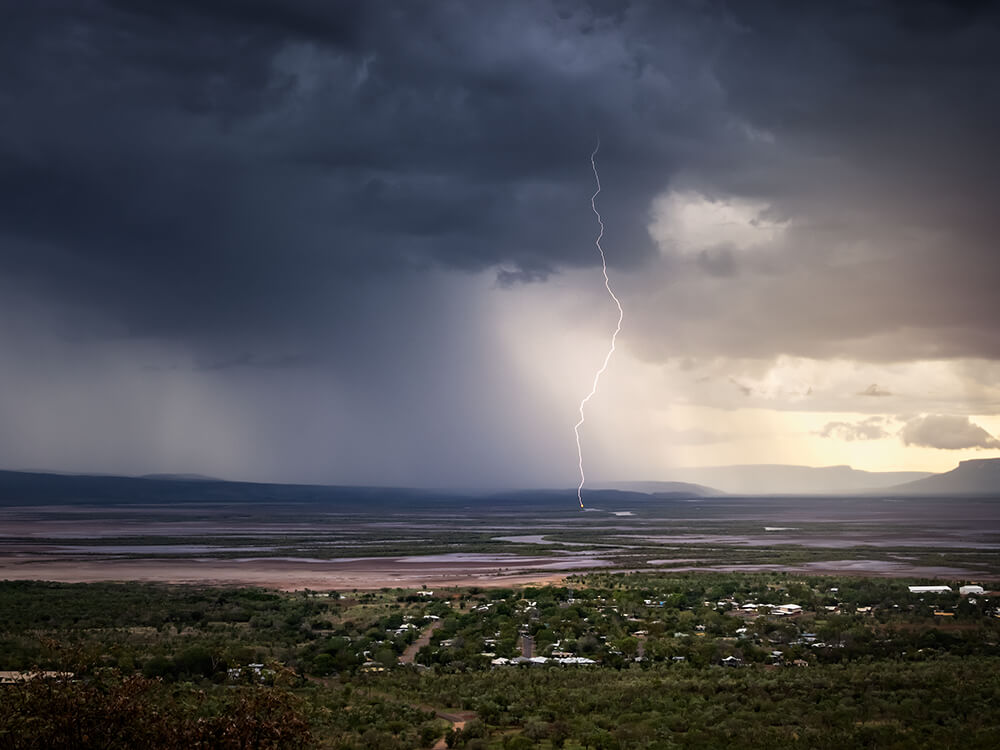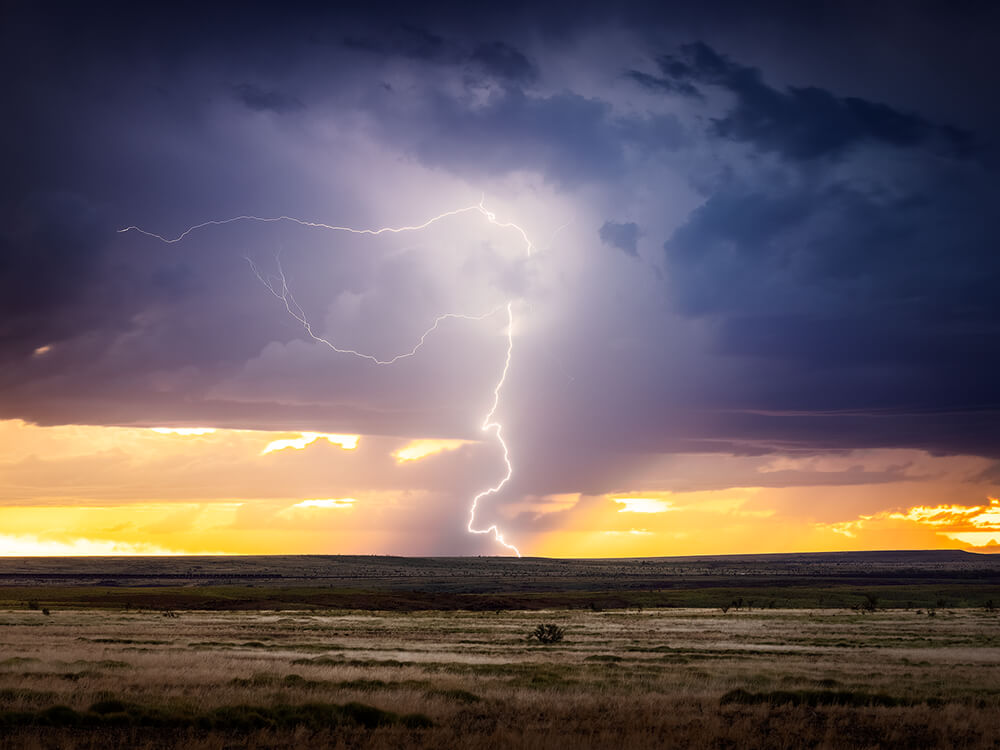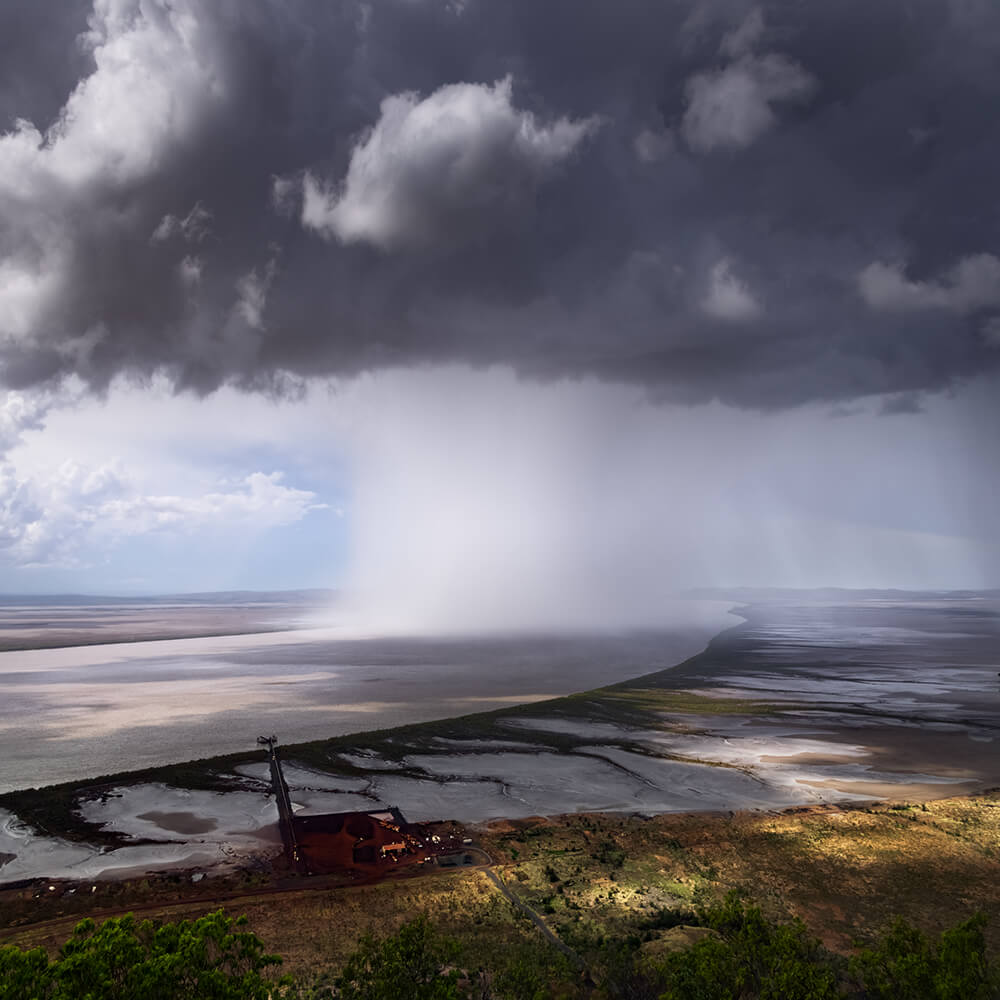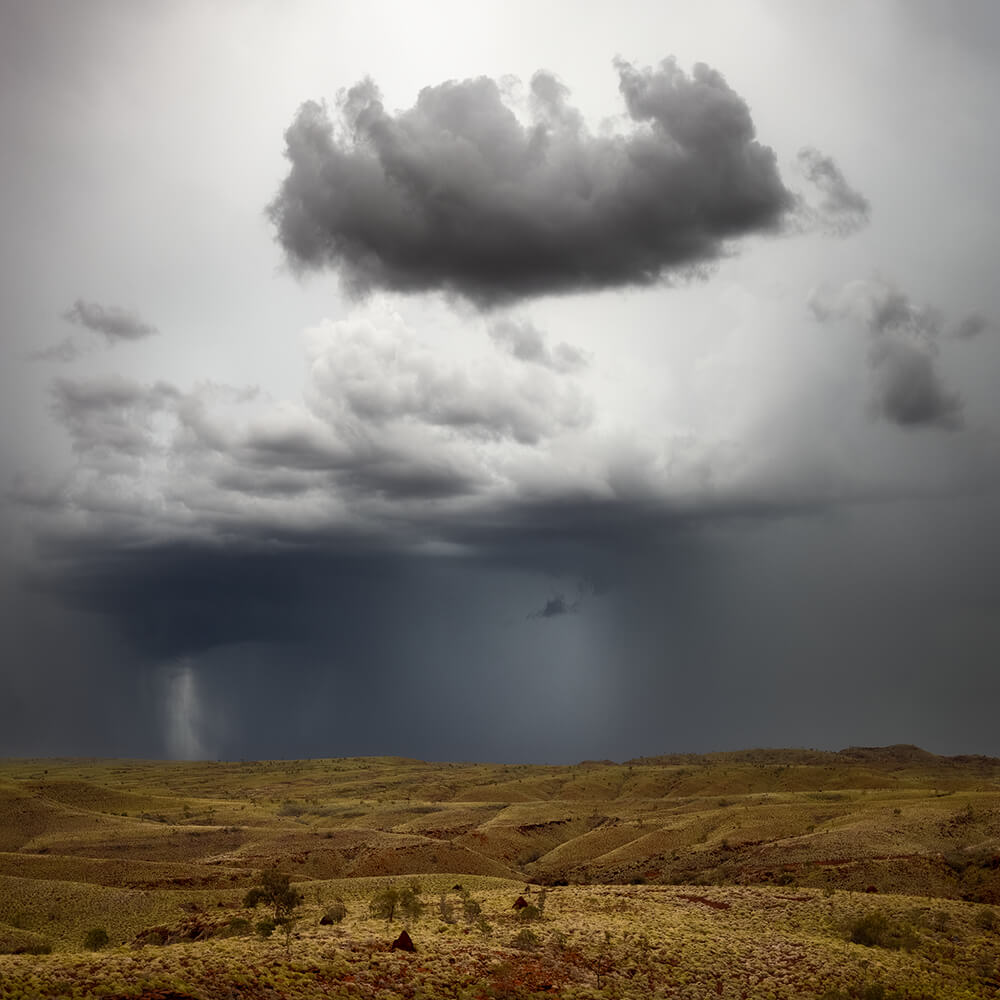- Storm Photography Tips and Camera Settings
-

Jordan Cantelo has explored some of the most remote corners of Australia in search of Mother Nature’s wildest weather-scapes. Here, he shares his tips on everything from staying safe while chasing your own perfect storm, to choosing the best camera gear and settings for the job.
Storm photography evokes many higher states of emotion for me. The sights of lightning and towering 40-50,000ft clouds, the tremendous sounds of thunder as it rumbles all around you. There’s nothing more exhilarating! But, before I provide advice regarding equipment and settings, it must be noted that storm chasing photography can be extremely hazardous. Here are a few of my tips for keeping safe:

• Study Your Storm
If you’re new to the genre of storm photography, I highly recommend doing some solid research into meteorology and finding out how storms develop in your area. This way you will have a better understanding of what you’re up against. If in doubt, you should seek some advice from an expert.
• Ensure There’s an Escape Route
It’s good to know what direction the storm you are chasing tends to travel in. What road surface will you be driving on? Will it be sandy or heavy clay holding a gravel road? This way you can plan your escape route if things turn pear-shaped.

• Beware of Lightning
If you can see lightning, it can strike you. Bolts from the blue, while rare, are lightning bolts that can shoot from the side of thunderstorms and strike from large distances from an active system.
• Tell People Where You’re Going
Always let someone know where you’re heading, as well as what time you expect to be at your destination. You may also want to agree on a time that you’ll be back home, and if your plans change, let your contact/s know.
• Chase With Others
It’s definitely worth going with other experienced storm chasers/photographers and meteorological experts to build up your knowledge. As well as learning loads, you’ll also have more fun.

• Camera and Lenses
Selecting suitable equipment is essential when photographing in extreme weather conditions. Primarily, you’ll need to be certain that both your camera and lens have weather sealing - I use the rugged Canon EOS R5. Lens-wise I use the Canon telephoto EF 70-200mm f2.8 L IS II with an EF-EOS R Mount Adapter when shooting from a distance. If I’m trying to capture the grandeur of a magnificent storm cloud, then I might use the ultra-wide angle RF 15-35mm F2.8L IS USM.
Think carefully before changing your lens. Storms fill the air with dust and dirt that can easily be blown onto your camera’s sensor. I suggest going back into your car if you do need to change lenses, where you can avoid the wind and rain. You’ll also need a waterproof camera bag, which should always be kept closed unless you need to grab something.
Note: After a storm, we recommend you don’t try to clean your sensor yourself and have it cleaned by an experienced professional. You can Contact Canon Australia’s service team for assistance.
• Tripod
If you’re going to use a tripod, then you’ll want to make sure it’s an extremely stable one. You may also want to use a weighted bag to stabilise and strengthen it against the wind.

• Shoot RAW
You should be shooting in RAW format to capture as much detail as possible, especially if you’re shooting lightning storms in low-light conditions. The EOS R5 has an impressive full-frame 45 megapixel sensor, which captures an amazing amount of detail.
• Rely on Autofocus
Whether you’re shooting at night or during daylight hours, you can get pinpoint sharp focus using autofocus. The EOS R5 has 5940 autofocus points and is incredibly reliable, even when your subject is literally moving as fast as lightning. If autofocus isn’t for you, feel free to manually focus and set your focus to infinity. Focus peaking is another great tool for making sure your images are perfectly sharp while manually focusing.
• Shoot in Full Manual Mode
For the best results, try to shoot in manual mode as much as you can when chasing storms. Having full control over your ISO, aperture and shutter speed will help you create more dramatic weather-scape images.

• Slow Down Your Shutter Speed
You may think that you need an ultra-fast shutter speed to photograph lightning, but you actually need a relatively slow speed of less than 1/60 sec. This is difficult to achieve during daylight hours and will require the lowest ISO value possible. ISO 100 is the base mark in the EOS R5, which is fantastic for this style of photography. If you struggle to get your shutter speed down, then you can use a neutral density (ND) filter to help lower exposure by a couple of stops. As the daylight disappears, you can just remove the ND filter.
• Use a High Aperture
Your aperture setting will be determined by how far away the lightning is, how frequently it is striking, and how brightly it is sparking. As a starting point, I tend to use an aperture of around f/11 and adjust it as the lightning moves closer or further away. The closer the lightning gets, the tighter I make the aperture. The further away the lightning is, the more I will open the aperture right up.
• Review Your Images Regularly
Once you’ve set up your camera, take a couple of test shots to see if your settings are suitable, and that everything is in focus. On the EOS R5, you can preview your images on the brilliant 3.2” LCD display, which is really useful when you’re out in dark and gloomy weather.

While images of stormy skies are incredible, they can be taken to a whole new level by capturing an actual lightning bolt, but don’t be too hard on yourself if you don’t. Anyone who has taken photos of storms will have a story to tell of all the times they just moved their camera and, BAM!, a lightning strike hit right down the center of the frame. It happens!
Also try to use the landscape’s unique characteristics to create more interesting scenes. It could be the leading lines of farrow lines in a farmer's paddock, a puddle with reflections, or even some animals in a field. Either way, look for interesting subjects to include in your foreground to draw the viewer through your images.
Storm chasing and weather-scape photography is extremely rewarding, but it can also be taxing on your body both physically and mentally. Constant changes to weather models and shifts in the local environment can be hard to keep up with, but don’t forget to take the time to soak it all in. The experience of watching Mother Nature perform her dance is extremely rewarding, so make sure you step back and enjoy the experience.
NOTE: Storm photography can be a dangerous activity. We recommend individuals do thorough research on the weather systems and environments they seek to capture well in advance. We also encourage individuals to act on the advice of official Government departments such as the Bureau of Meteorology, which includes remaining indoors when necessary. The EOS R5 is housed in a weather resistant magnesium body but does not provide 1D-Series standards of weather sealing and protection. We advise to use the EOS R5 in various weather environments at their own caution.
See more of Jordan Cantelo’s work on Instagram here.

Professional photographer, Logan West shares his journey from a beginner to capturing Porsche's brand new Dakar 911 detailing his top lens picks and what to look for when choosing gear.

Prime lenses ideal for producing high-quality, sharp images with better low-light performance making these types of lenses perfect for portraits and travel.

Photographer and videographer, Denys Black, get's hands on with our first APS-C sensor mirrorless camera - the EOS R7.